While having someone to look up to is neat, being the second child is not without its challenges. Expectations are often diminished, interest is dimmed and achievements undercut by the simple chronological lateness of their arrival. Being the secondborn can be a tough gig — moreso if your parents happen to be FromSoftware and your older sibling is responsible for a whole genre of gaming...
I say "FromSoftware" — you say: Demon's Souls! Or Dark Souls. Or Sekiro: Shadows Die Twice... Or, y'know — Elden. Ring. Yup. For a little outfit that started out making business software in the '90s and only turned to gaming as a sideline between paying work, FromSoftware is nothing if not an underdog success story that can trace its lineage back to 1994 and a tough little nugget called King's Field, which they made in six months with a staff of 10.
From that humble beginning, they went on to devote themselves full-time to game development, growing into a 397-strong powerhouse of a studio which (to date) has made 68 games over the course of its 30-year existence (among which, most notable, was Demon's Souls, which is the reason "Soulslike" games are a thing).
But while FromSoftware's Soulslikes have been the most commercially successful, they only represent 10 games (or 15%) of the company's output, leaving another (albeit no lesser-known) series to do the heavy lifting behind the scenes for 16 sequels straight (23%).
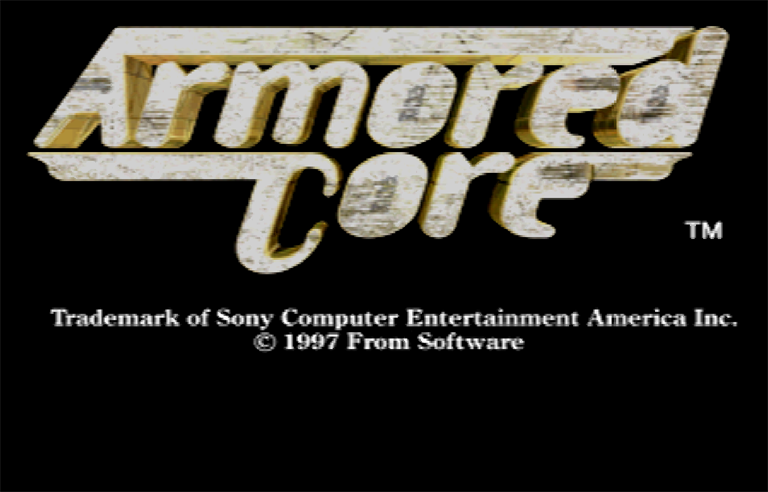
Armored Core (PS1 / 1997)
I'm no PCMR elitist, but I have to admit that it wasn't until I ran snout-first into Armored Core that I stopped being a console skeptic. Here was a game with substance: intricate mechanics, almost boundless customization, gameplay that balanced secrets and exploration against time limits and frenetic gunplay — and local multiplayer!? In short, the sort of production a pig might expect from a PC release by a devoted studio completely at odds with shallow action/platformer slop that passed for regular PlayStation fare. It finally pried my eyes open to the fact that depth was not PC-specific and devoted studios were not married to certain types of hardware (what can I say: I was young once).
In Armored Core, you played a Raven: a mercenary pilot of the titular ACs (giant mecha) that fought for pay in a post-apocalyptic world ruled by sprawling corporations.
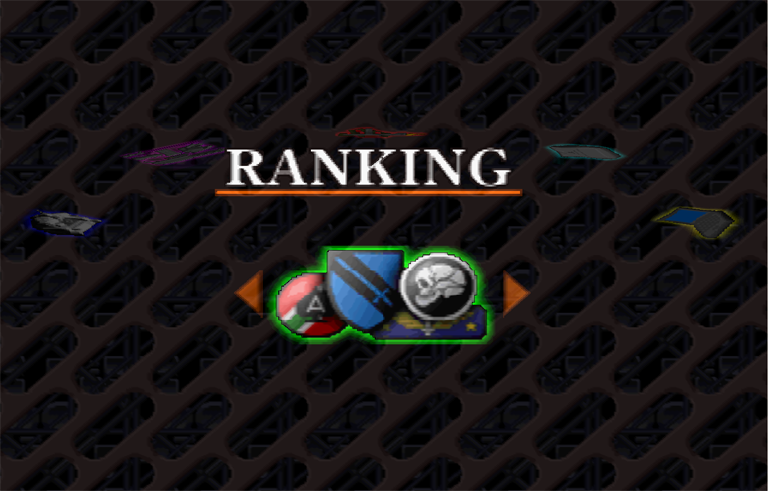
From the comfort of a computer interface (called the "Raven's Nest," in its first iteration), you could check your email and ranking, shop for AC parts, assemble them in the garage, take them for a test drive to gauge performance or, naturally, undertake missions for pay. The overarching plot was a power struggle between two competing corporations (called Chrome and Murakumo Millenium) set on an Earth whose surface was devastated by the grandaddy of all wars (called the "Great Destruction"), which forced all human habitation underground. Mission progression was branching depending on which corporation you did the most work for.
For a 27-year-old game, Armored Core had a lot going for it.
For starters, the mecha designs sprang from the mind of Shōji Kawamori (no big deal: he "just" came up with Transformers, shaped Macross and Robotech and had ideas of his "borrowed" by Top Gun); and, correspondingly, struck that ideal equilibrium between fantasy and practical engineering.
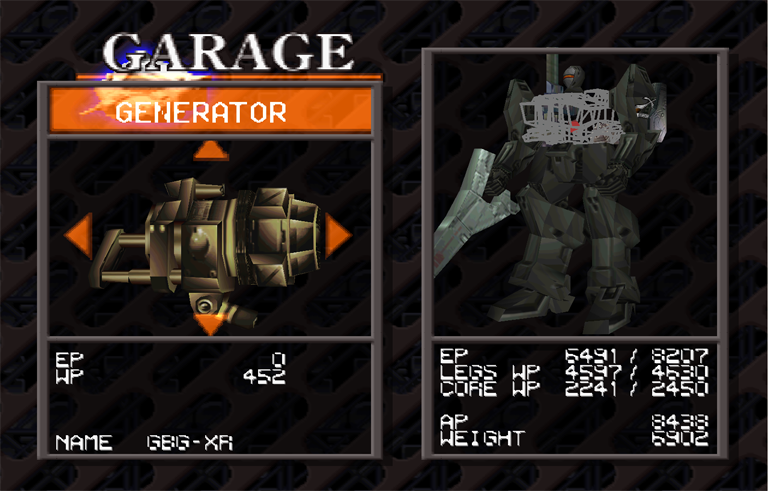
ACs were composed of 12 parts (head, core, arms, legs, generator, fire control system, called an FCS; boosters, two back- and two arm-weapons and optional parts). Each physical component (head, core, arms and legs) had two defense ratings: weapon protection (WP) and energy protection (EP). The head determined the type of radar and map you'd have at your disposal during missions and whether or not you could detect (lock-on to) Biological Organisms (in caps for a reason that will become clear). Cores offset defense with the chance to intercept missiles. Legs came in four types (humanoid, reverse-joint, tracked and quad) and determined aiming stability, speed, jump capability and the AC's turn radius. The FCS balanced the width of your aiming reticle and lock-on speed. Arms could be humanoid or hold built-in weaponry. Ballistic weapons cost money to reload. You could have an additional radar mounted as a back weapon, your left arm had a slot for a laser sword and boosters had varying power and power-drain...
And, oh yeah, every AC part had mass and consumed a set amount of power, making AC constuction something halfway between a design assignment and an artform.
Hold up: my trotter just cramped...
If that description seems overlong, it's only because the amount of consideration FromSoftware put into the mechanics governing AC interactions was staggering. For what, in practice, amounted to a 3rd-person action platformer, the engine behind it was truly RPG-worthy.
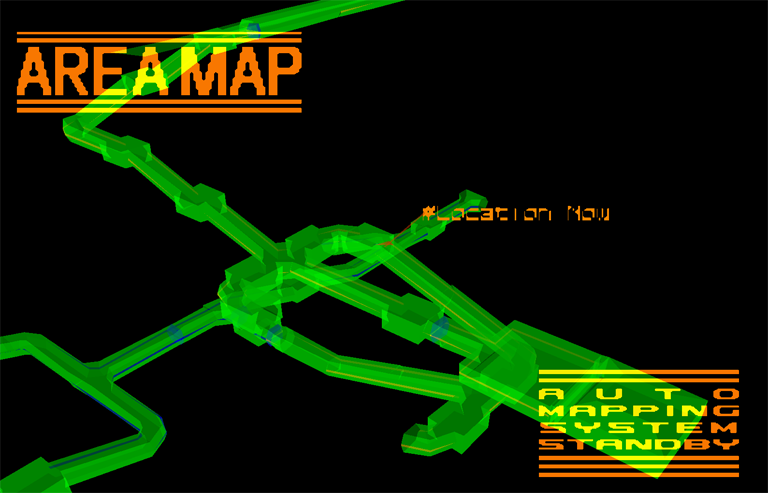
Speaking of RPGs, the game's level designs were more reminiscent of old-school dungeon crawls than a bleak, post-apocalyptic future. With the game's surface world devastated, most of the action took place in secret underground facilities, abandoned factories, sewers or missile silos which struck a contrast to the sparse (but welcome) surface outings offering a rare glimpse of sun and sky or a chance to splash about in coastal waters.
The sprawling levels allowed for an almost sandbox-y approach to gameplay (as you could tackle objectives any way you liked), but also required a certain amount of flexibility from the player (as not all AC designs were equally suited to circumstances, opponents and terrain). Because FromSoftware rocks, certain levels also contained hidden, special AC parts (ranging from the mundane – like the HD-X1487 head that had decent defense but no radar or map – to the excessive – like the WG-1-KARASAWA laser cannon or iconic LS-99-MOONLIGHT not-lightsaber).
On top of secret parts, there was also an unlockable procedure you could undergo (through sucking), that would give you a sizable edge and shuck some limits "normal" ACs had to abide by (called Human Plus).
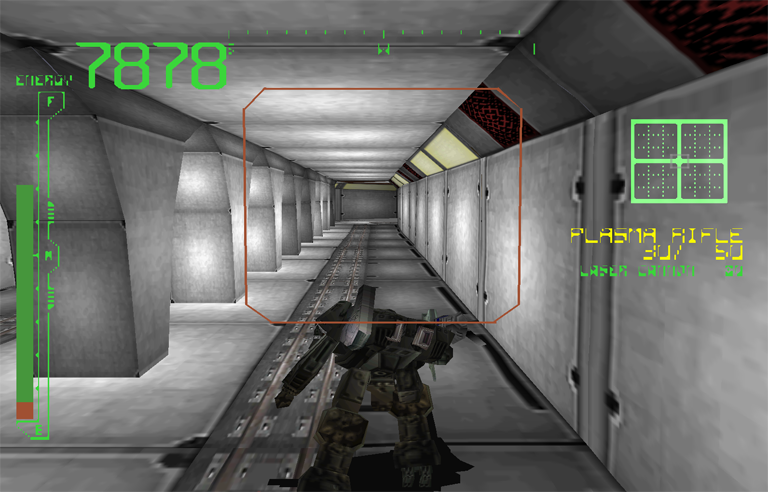
The neat thing about Armored Core missions was you never knew what to expect. Would you be fighting "regular" opponents in clunky MTs? Would you be racing against the clock? Would another Raven be hired to oppose you? Could you trust your employer not to doublecross you halfway through the mission? A lot of mecha games fail to capitalize on inventive mission design (here's looking at you, Battletech), but AC did a fantastic job of always keeping you guessing.
My two favorite examples are a mission against a Raven escapee from the Human Plus program and a seemingly straightforward mop-up of Biological Organisms.
In the former – guessing I was in for a tough fight – I built an AC geared to take serious punishment without really reading the fine print, which mentioned the mission taking place on "a skyscraper" that offered "poor footing." The key to winning the fight, as it turned out, was jump capability and large energy reserves. What I brought to it was the equivalent of a walking bunker (with all the implicit aerodynamic grace)... That Raven didn't even ding me — but gravity sure did.
In the latter, I did everything right except forgot to outfit a head that could lock-on to Biological Organisms (it's a line item for a reason). As a result, I had to aim at every little critter manually – which I couldn't do fast enough – and was eventually whittled down and overwhelmed...
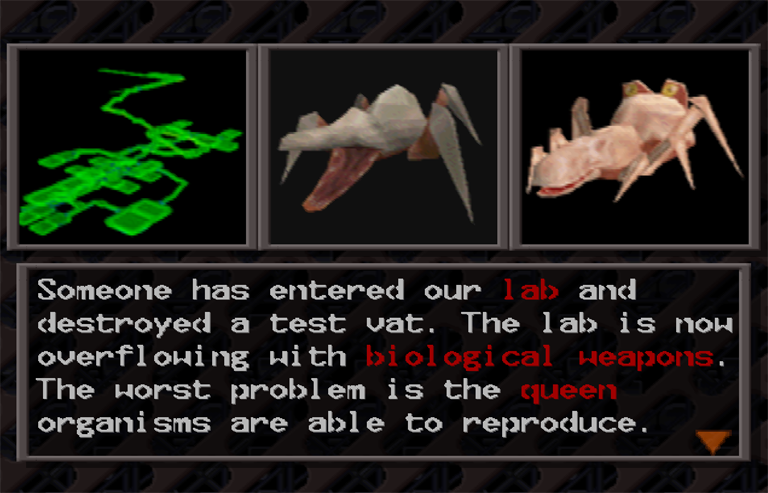
On that note, the one shortcoming of the game was its control scheme which depended on no fewer than 13 buttons you had to be able to use quickly and could get a bit overwhelming even with the comfort of having strafing bound to the left and right bumpers on a controller. Vertical aiming, especially, was a cow as you could only, slowly, raise or lower your perspective and had to press two buttons simultaneously to center it once again. Complex in most situations, it only got harder when you were also boosting left and firing at the same time.
Spanning 47 missions, the original Armored Core came with the bonus of a sorta-New Game Plus mode, where you could continue to play missions after finishing the game (which allowed you to pick up missions your playthrough choices might have excluded and became a staple of the series); and a split-screen deathmatch mode you could enjoy with your closest frenemies.
The game spawned two expansions, both of which let you import your existing AC pilot for further mecha shenanigans: Project Phantasma (PS1 / 1997) offered 17 new missions and expanded the parts roster, while also introducing the Arena Mode (where you could, at any time, challenge 50 ranked Ravens in single combat for money and even more parts); and Master of Arena (PS1 / 1999), which combined aspects of AC and Phantasma into a sort of two-disc, best-of medley (19 new missions, still more parts, 15 ranked and 34 unranked arena challengers on disc 1; and a further, staggering 111 arena battles and an editor for making arenas of your own on disc 2).
While the ability to keep playing with the same character was neat and some new missions were innovative and fresh, the countless arena battles got old quick. And as neither addition expanded the gameplay in any way, all you were left with was More Stuff To Do (which wasn't bad, so long as you didn't get bored with the core gameplay loop). It wouldn't be until a year (and a new console) later that the series would see any true innovation.
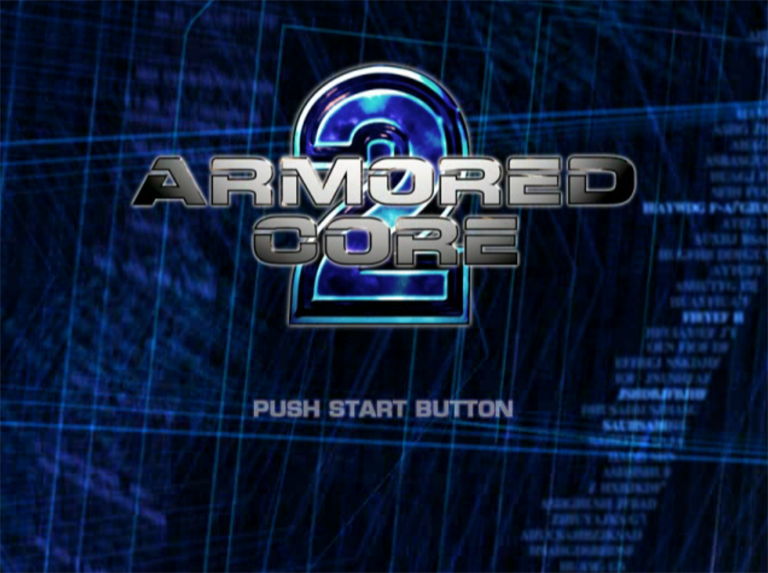
Armored Core 2 (PS2 / 1999)
The sequel improved Armored Core in almost every way.
Thanks to the beefier PS2 specs, the graphics got a massive facelift, the ACs got some quality-of-life upgrades (in the form of new, more diverse parts); and the fantastic level design continued to evolve from claustrophobic underground confines into meandering sea battles, aerial skirmishes and labyrinthine city combat.
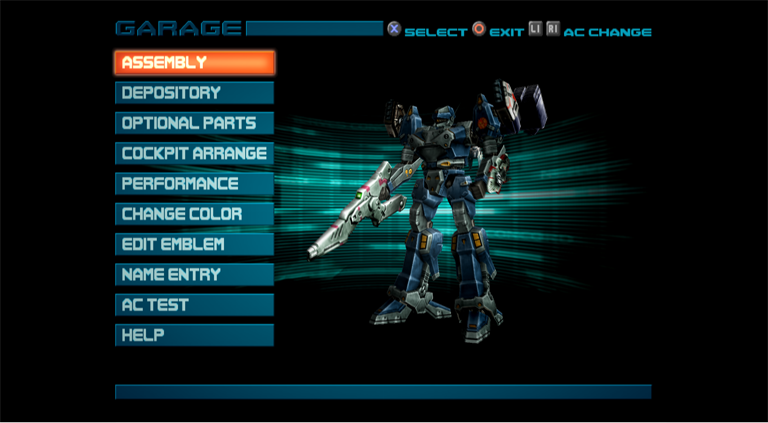
Compounding existing customization of AC parts from the original game, AC2 introduced more components, such as Inside parts (core addons that could launch missile decoys, jam radar or drop mines); Extensions (arm addons that could intercept missiles, shield from damage or increase the volley strength of a back-mounted missile launcher); Energy Shields (left-arm alternatives for the sword that blocked damage); and Ammo Packs (back-mounted parts that increased the ammo count for specific weapons). ACs now also generated heat, which had to be offset with Radiators (component 14 on the growing list of Armored Core ingredients).
The player was no longer limited to a single AC that had to be endlessly customized to fit a particular mission and could, instead, store a stable of three separate designs which could be accessed on the fly. Another neat wrinkle was that – depending on your AC's head – your mecha could now speak plainly or elaborately, in a male or female voice.
The Arena mode (for better or worse) made a comeback with some opponents appearing in missions (which, depending on the outcome, could result in their removal from the 50-position ladder); as did the split screen mutliplayer. The game even offered the player a chance to customize the UI, keeping only the stats relevant to their play-style...
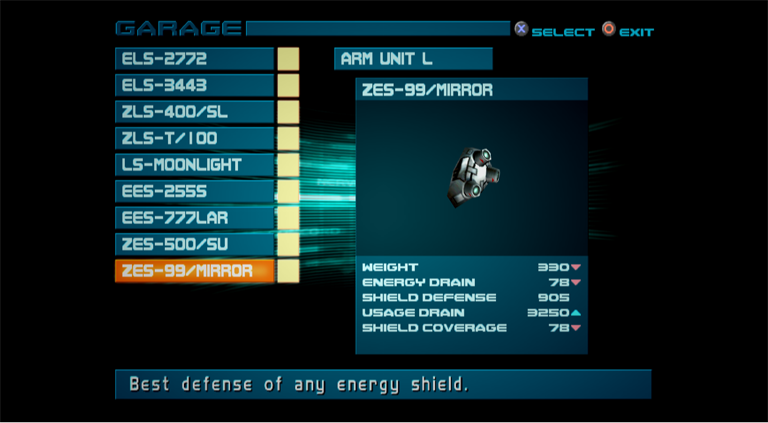
On the whole, Armored Core 2 was an exceptional achievement and – together with Another Age (PS2 / 2001) (an expansion that added 92 new missions accessed through a neat, overland map) – remains my favorite entry in the series, with an art style that is pleasing without being overly complex and gameplay that – though challenging – could always be overcome, given the right AC build (and, maybe, a pinch of skill or luck).
The sequel had only two shortcomings.
First, the contortionist control scheme from AC made an unwelcome comeback (now further complicated by the fact that extensions had to be activated with, I think, a joystick push; and the Inside parts lengthened the list of weapons you had to scroll through).
And, second (and this – as far as I know – turned into the series' persistent achilles' heel), the plot got a complete reboot, with only the slightest commonalities carrying over (you were still a Raven, but now the action took place on Mars, 70 years after the original game, with different corporations at war). While I can sorta understand the need for fresh localization (to justify the new environments), the fact that every AC game from this point on would reshape the plot – instead of continuing it – kinda gave the series this odd, disjointed vibe: like the games were disparate little episodes linked by the thinnest of common threads (Ravens, Armored Cores, MTs).
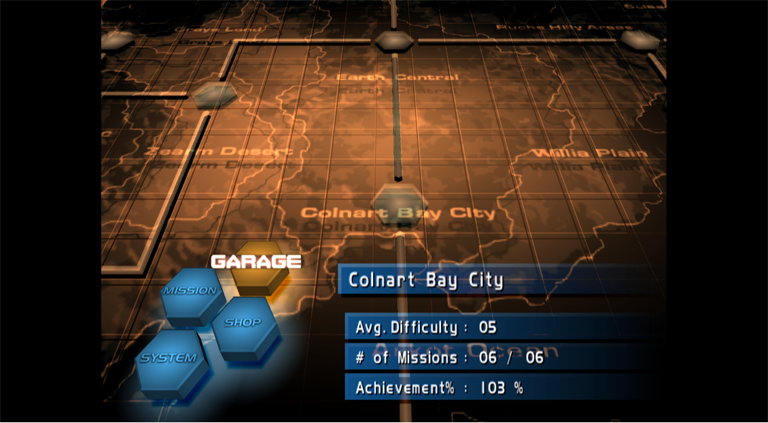
Still, the game was a lot of fun and some of my fondest memories come from its missions (like skipping across the backs of jet transports in mid-air, battling an underwater leviathan in an underground reservoir, skimming the waves next to – and under – the sort of trans-atlantic highway that strings together the Florida Keys or attacking a fortified beachhead like a one-mecha reenactment of D-Day).
It's a shame the game didn't get more expansions, but – in retrospect – FromSoftware was probably wise to leave it while they were ahead. It's just a shame they didn't apply said lesson to the next entry in the series...
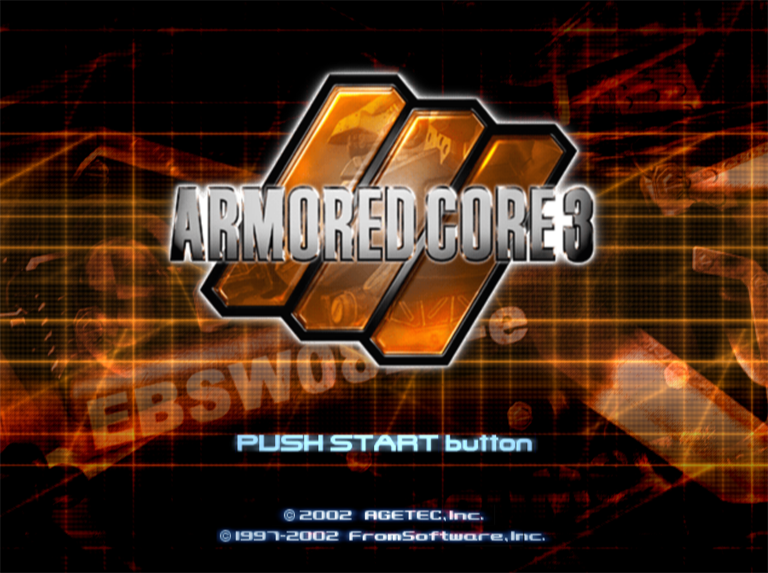
Armored Core 3 (PS2 / 2002)
The third Armored Core game was a bit hit-and-miss, carrying on the tradition of expanding gameplay without really addressing any of its shortcomings.
The plot got another reboot (this time, returning to Earth's underground city of Layered, which was controlled by an AI called – wait for it – The Controller; and fought over by two corporations called Mirage and Crest, while a third – Kisaragi – lurked in the wings). The convoluted control scheme persisted and the gameplay underwent another subtle mutation (this time, not entirely for the better).
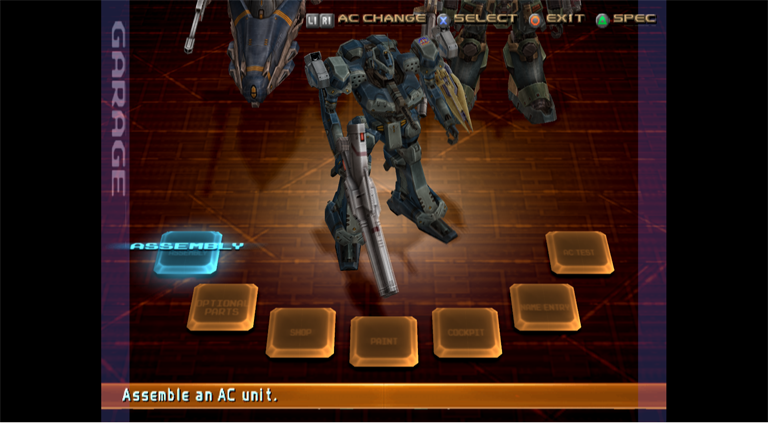
If I had to sum up AC3's faults in a single sentence, I'd have to go with "not as fun anymore." While the gameplay changes made sense (having to stop and kneel to fire certain back weapons, going over the weight limit decreasing AC agility or Human Plus being relegated to an optional part called OP-INTENSIFY that then had to be unlocked); they narrowed the scope of customization allowed by the game. ACs 1 and 2 may have had fewer parts to work with, but – with a bit of imagination and effort – those parts could be combined almost every which way... AC3, on the other hand, gave you an even larger repository of parts, but then – every time you'd try to combine them how you wanted – would slap you on the wrist, saying "not that way!"
Still, it was more Armored Core and certain additions – such as swappable left/right arm weapons (blades for the right arm and guns for the left), core-mounted weaponry or being able to jettison components to boost your agility – were, indeed, neat. Of all the games to date, AC3 also did the best job of making the Ravens feel like a community (rather than ranked obstacles in your way), with certain Ravens helping you complete missions.
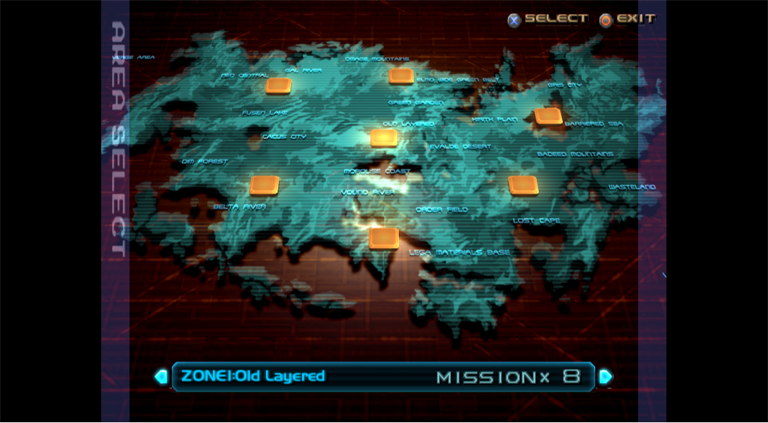
AC3 got one expansion called Silent Line (PS2 / 2003), which followed in the vein of Another Age by adding 34 missions accessed from an overland map. Silent Line also kept the Arena (with 41 opponents) and an Extra Arena (with 14 opponent pairs, whom you challenged at the same time).
The expansion felt a little tired, though, with sudden difficulty spikes, missions that resembled others you'd played before and AC parts that were mere reskins of existing ones with different stats. It felt a little halfhearted and phoned-in, in places, though the core gameplay remained (for what it's worth) true to the series.
As was, by now, their habit, FromSoftware gave it a year and came out with the next installment, which – again – reshaped itself, though not in the places that needed it.
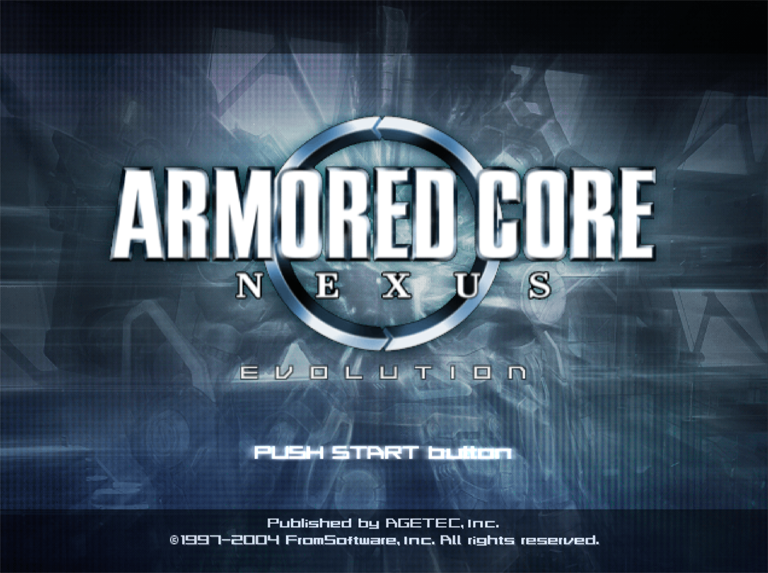
Armored Core 3: Nexus (Evolution/Revolution) (PS2 / 2004)
Once again split between two discs, Nexus was yet another reinvention — but not really. In essence, it was Master of Arena, except infused with nostalgia instead of deathmatch-envy.
The Evolution disc played like another AC installment (with a "plot", missions, an arena and all the rest of it). With updated UI, to be sure, and a few new tricks (such as "hanger" weapons you could conceal and swap to when your primary gun ran dry); but also with the same old problems (the key combo to switch to a hanger weapon was so convoluted, I don't think I ever managed to do it).
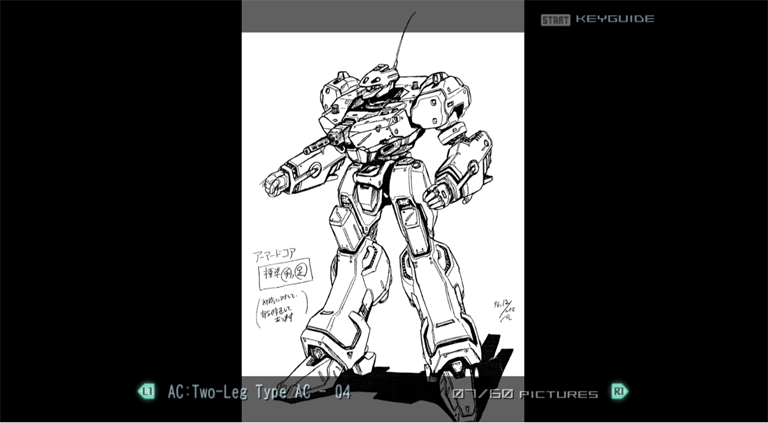
The Revolution disc, on the other hand, was a kind of trip down memory lane, with reimagined missions from all previous Armored Core installments bundled into one (which, in an awesome twist, could still reward you with the parts you would have originally found in 'em). Revolution also came with a gallery of AC concept sketches (worth seeing if you ever need your drawing competence questioned); posters, soundtracks and movies from past installments.
FromSoftware made two expansions for Nexus: Nine Breaker (PS2 / 2004) (a sort-of MoA clone that focused solely on arena fights and skill challenges, with no plot or missions to speak of); and Last Raven (PS2 / 2005) (another standard-fare, plot-centered continuation); before moving on to Armored Core 4 (and the uprated specs of the PS3) in 2006.
But, fond as I was of the series, I was getting kinda tired or retreading the same ground with every new installment and the fact that PS3's weren't exactly cheap didn't help. Nexus is where my Raven career (and this retrospective) came to an end.
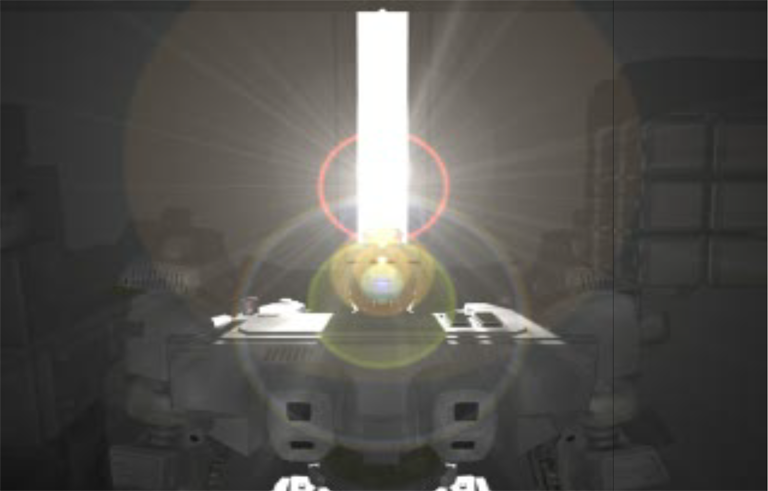
Summation (also — oof!)
Plagued by a needlessly complex control scheme and a mixture of great original ideas (as well as ones you'd be hard-pressed to call either); while, at the same time, boasting a wonderfully indepth customization system, some (to this day) inspired, memorable level design and gameplay that could be awesome (if you didn't get your buttons mixed up), Armored Core has always existed in the shadow of FromSoftware's outright successes, as befits its secondborn status. And, to be fair, the series' mechanics all but ensure it remains an acquired taste and the sole domain of the truly devoted...
But even if the control scheme is a little awkward, the story-telling a bit stilted and vague and the overall structure rehashed or repetitive, the series does have a lot of fun on tap and – 27 years later – brings back fond memories of many hours spent dodging flames near derelict oil rigs, outrunning gas leaks in underground laboratories, protecting trains at badland waystations or even soaring through the lower troposphere.
Being first doesn't always equal being better. Sure, you're around for longer, have more time to garner experiences and a chance to form a more coherent construct. But, equally, coming second can show you what pitfalls to avoid, what results certain decisions will have or – simply – what choices lie as yet unexplored.
Armored Core may be FromSoftware's lesser-known secondborn, but – trust me – if you are a fan of mecha combat, urban decay, exploration, ridiculous customization or reacting to the unforeseen, it's a second child worth knowing. Because, sometimes, coming second can bear surprising results.
